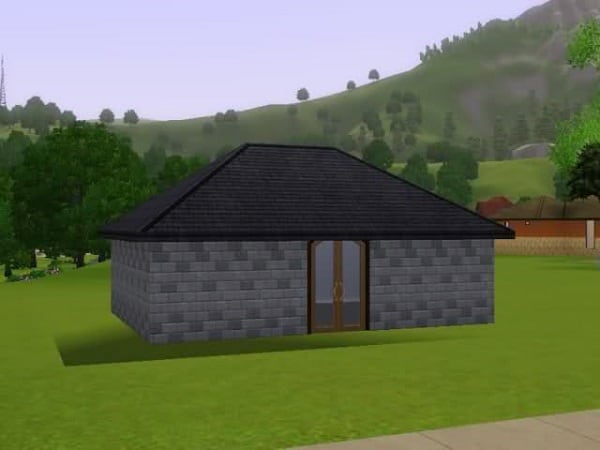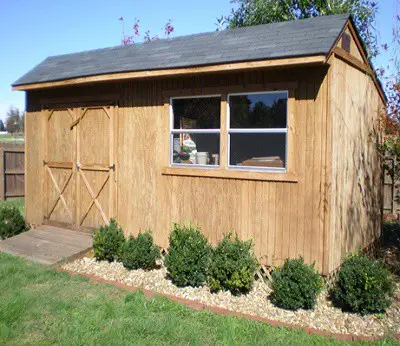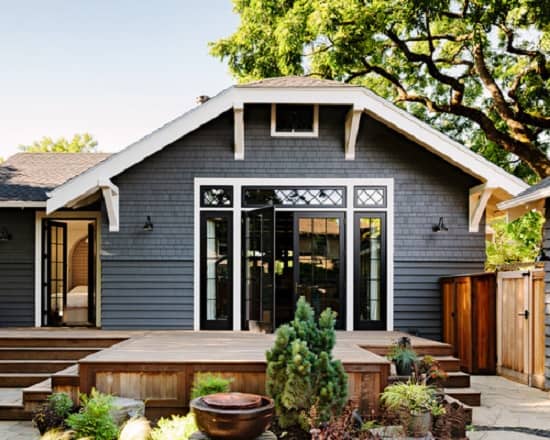The 9 Most Common Roof Styles for Your Shed
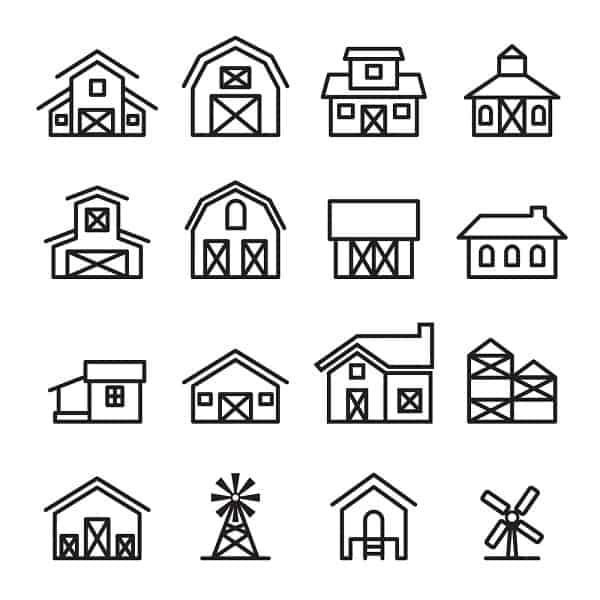
Decide and choose your shed roof style ...
Quick Navigation
One of the toughest parts of building your garden shed is deciding what type of roof it should have. You might think that the simple gable style roof is your only option, but in reality, there are several different shed roof styles for you to choose from, all of which can be used with equal success in most instances.
Just like house roofs, your shed roof must be able to withstand rain, snow, sun, heat, and cold while continuing to protect your shed and everything in it. The good news is that no matter which shed roof style you choose; most are relatively easy to build.
Top Roof Styles In Use Today
There are fifteen different roof styles in common use today, most of which can be used on your garden shed. However, if you look at the images below, you can see that several of them are not exactly practical for use on your backyard shed.

Image courtesy of RoofCalc.net
9 Top Rated Shed Roof Styles
So, let’s take a closer look at 9 of the most common shed roof styles in use today, along with their good points and bad points.
1. Gable Style Roof
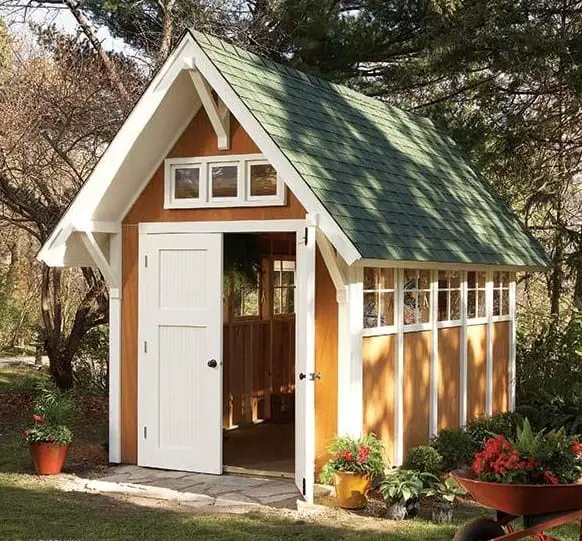
Dream shed with gable style roof
The gable style roof is one of the most common styles of roof in use today in residential, commercial, shed, and garage construction. This shed roof style is also known as a peaked gable or pitched roof and is easy to recognize by its triangular shape.
While relatively easy to build, even for beginners, you will need to know how to calculate the correct pitch and snow load to ensure your new roof will provide you with years of service. This type of roof can be covered with a wood sheathing, felt paper, and shingles or made with sheets of metal.
Pros | Cons |
|---|---|
Sheds rain, snow, ice easily | May not be best suited to areas where high winds and hurricanes occur |
Offers more space for an attic | Poor construction or inadequate framing can lead to the roof collapsing |
Simple and less expensive to build than many other shed roof styles | High winds can cause the shingles, felt, or sheet metal to peel away |
2. Hip Style Roof
The hip style roof is one that includes slopes on each of the four sides of your shed. All four sides of the roof should be equal in length such that they come together at the top of the peak forming a ridge. This ridge is often used in houses, garages, and shed for a vent to help keep the inside cooler during the summer months and to help ventilate fumes.
The hip roof is slightly more difficult to build than a gable roof.
Pros | Cons |
|---|---|
Excellent for areas of high wind and snow | More expensive than a gable roof to build |
Offer space for an attic | Requires more building materials than a gable roof |
More stable than a gable roof | Added seams may result in more leaks |
3. Flat Style Roof
The flat roof is probably the most common form of commercial or industrial and as the name suggests, this shed roof style is perfectly flat. But worth noting is that even though this type of roof is perfectly flat, it does have a slight pitch designed to help with drainage and water run-off.
The good news is that they are one of the least expensive types of roof and can be used in areas with high or low rainfall with equal success.
Pros | Cons |
|---|---|
If you build it strong enough can be used as a patio | Low pitch makes flat roofs susceptible to leakage |
Good place to install solar panels | Not recommended for areas with high snow or rainfall |
Easy to build requiring fewer materials | Higher overall maintenance costs |
4. The Barn or Gambrel Style Roof
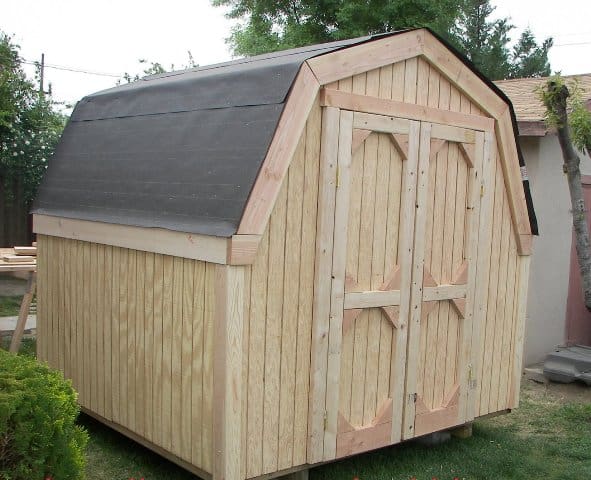
8x8 gambrel shed plans
If you go out in the countryside and look at many of the older barns, especially for those of you who live in the northeastern part of the U.S. You will see many of them sport this double slope style of roof.
The lower slope tends to be almost, but not quite, vertical. The upper section of the roof has a much lower slope.
These roofs are seen on homes, barns, log cabins, and of course, garden sheds. They are considered to be very aesthetically pleasing.
Pros | Cons |
|---|---|
This style of roof offers plenty of extra space for storage without added expense | Not recommended for areas of high wind or those with heavy snowfall |
Simple construction with two roof beams and a series of gusset joints | If not constructed properly tend to be structurally weak |
Fewer materials mean lowered construction costs | Need to be waterproofed at the ridges to prevent leaks regularly |
5. The Pyramid Style Roof

Just the name says these roofs look a lot like the Great Pyramids in Egypt in which all four sides of the roof meet in a point at the top of the roof. Each of the four sides has a single slope.
With this particular style of roof there are no gables or vertical sides. They are a good choice for smaller sheds or any other type of auxiliary structure.
Most designs feature overhanging eaves that help to reduce energy costs. Bear in mind this type of roof can be challenging to build.
Pros | Cons |
|---|---|
Good choice for use in areas with high winds | Requires more building experience |
Extra space adds more storage | Higher costs due to complex design |
High slopes are good for areas with heavy rain and snowfall | Top may be too high for certain building code restrictions |
6. The Saltbox Style Roof
The salt box style roof offers a slightly different take on the pitched roof in that one slope typically has a steeper pitch than the other and is shorter. This roof design features gables at each end.
This roof style originates back in the early Colonial days and came from the need for people to add more room to their homes without having to invest significantly in more materials.
Although mainly used in homes, the saltbox roof can be an excellent choice for larger sheds and garages as it can turn a single-story building into one that is either one and a half or two stories high.
Pros | Cons |
|---|---|
The dual slopes let water run off easily, perfect for areas with heavy rains | The design itself if rather tricky |
More durable than the standard gable roof | If you build a loft It will have sloping walls |
Can be built to handle moderate to heavy snow loads | May be expensive due to the number of trusses and supports needed |
7. The Skillion Style Roof
The skillion style of roof is often referred to as a lean-to or shed style roof. This shed roof style offers a single slope roof with one end often attached to the wall of a taller building such as the side of your house or garage.
In many ways, it looks just like one-half of a pitched roof. In most cases, these shed roof styles are reserved for use in home additions, porches, and of course, sheds.
They are among the simplest and in many cases the least expensive roofs to build. Most are covered with sheet metal, an EPDM sheet, or rubber membrane.
Depending on which way the slope of the roof points, a skillion roof can be the perfect place to install PV solar panels.
Pros | Cons |
|---|---|
Very easy to build | The ceiling can end up being very low depending on the pitch of the roof |
Steeper pitch lets snow and rain run off easily | May not be best suited for areas where high winds are common |
Less expensive to build due to the need for fewer materials | May not be the most aesthetically pleasing roof |
8. The Jerkinhead Style Roof
This style of roof looks very much like the standard gable roof in that it retains a central ridge with sloping sides. The big difference is that the ends of the roof have similar features to those found in hip style shed roofs. In other words, the roof looks just like a gable roof that has had both ends “hipped” or cut short and then folded down.
This style of roof is also described as an English hip roof or a clipped gable roof. No matter how you describe it, the roof looks like a little like a milk carton that someone has pressed the ends down on.
Pros | Cons |
|---|---|
These roofs are more stable that the standard gable roof | They are far more complex than a gable roof |
These roofs are far more stable in high winds | Complex design makes the cost higher |
Higher pitch adds more interior space | Requires a higher level of building skill |
9. The Bonnet Style Roof
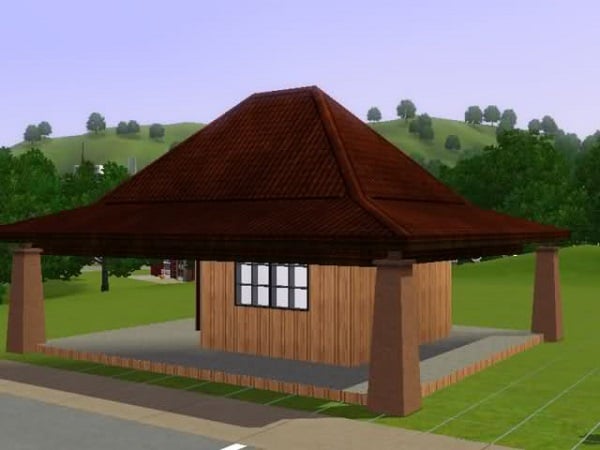
Boonet style roof
Bonnet style roofs are also referred to as a kick-eave roof are very similar in design to hip roofs, but add on an extended lower pitched eave that goes around the perimeter. This overhang can provide you with a place to relax out of the sun and help to keep rain and snow from getting in the doors.
While not one of the most commonly used shed roof styles, they do still have their advantages as well as being extremely aesthetically pleasing.
Pros | Cons |
|---|---|
The upper slope can be used to create more storage space | Complex design requires more materials to build |
Overhanging eaves offer shade and protect the walls from water damage | Expensive to construct due to need for more materials |
Rain and snow run off the slopes easily | Water can pool in the valleys where the two slopes meet, extra waterproofing must be used |
Topping It All Off
As you can see, there are many different shed roof styles for you to choose from. Those listed above are the most commonly used and for the most part among the easiest to build. While you are considering which one of these roofs is likely to be the best choice for your shed, keep in mind your construction skills.
There is no point in choosing a particular style of shed roof, falling in love with it, and then as you get started building it, finding out that you have to hire a contractor as your skills are simply not up finishing what you have started.
If you have enjoyed reading about the different shed roof styles listed here, please let me know.
If you have any information you would like to see here, please contact us here.
Let everyone know you enjoyed reading this on Facebook, Twitter, and Pinterest.
Thank you for reading this.
Related Articles:

